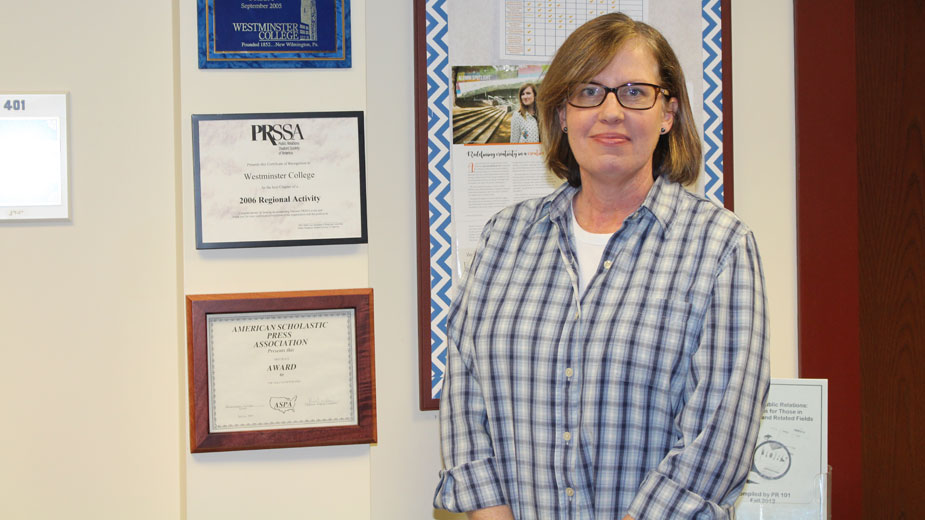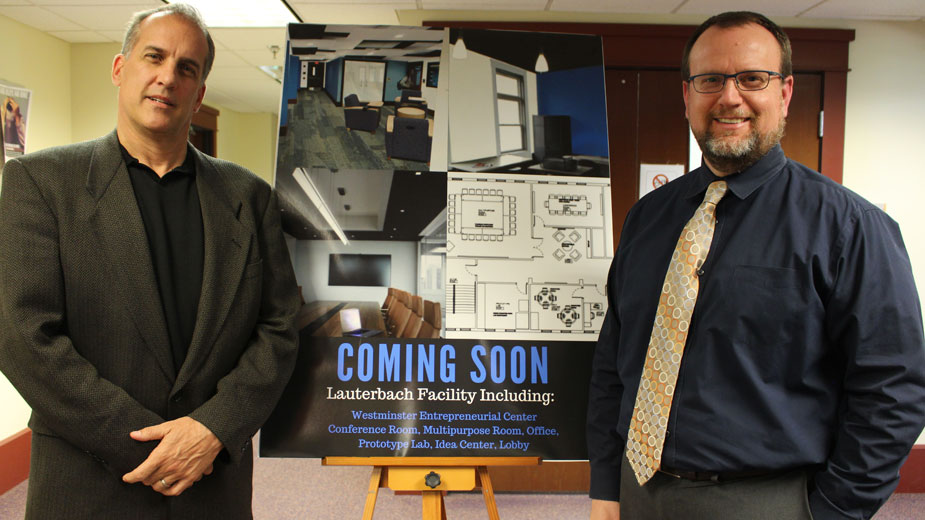Westminster College Provides ‘Pracademia’
NEW WILMINGTON, Pa. — Pracademia. It’s a word that has yet to find its way into the American lexicon but is nevertheless used frequently throughout Thompson Clark Hall on the campus of Westminster College.
“It’s a word I’ve kind of coined around here,” says Eric Gaber, entrepreneur in residence and visiting professor at Westminster.
Gaber loosely defines the term as achieving academic knowledge through practical experience. Too often, he says, business students receive very little applied learning throughout their curriculums, and that’s one aspect of higher education that he wants to improve through the Westminster Entrepreneurship Center at the college.
“I’ve started several companies and I’ve been in the private sector for 32 years,” Gaber says.
Throughout his career, he’s learned how to navigate business by learning firsthand what it’s like to succeed and flop.
Over the last 11 months, Gaber says he’s helped to expand enrollment in the program from four to 25 participants who have seven companies in various stages of development. And, the center is working with six existing companies outside of the college, one of which just landed financing from Ben Franklin Technology Partners in the six-figure range, he says.
Worth noting is that Gaber has drawn interest from various disciplines inside the college. “I have a nursing student who wants to own a florist,” he says. “We have three music majors that want to open a music studio and an earth science major with some really unique ideas.”
A portion of the first floor of Thompson Clark will undergo renovations and be transformed it into a space more conducive to brainstorming and hashing out new ideas, Gaber says. Work on a new conference room, improvements to the ideation room in the center and upgrades to an innovation and prototype lab should begin soon and be ready in several months, he says.
“In the prototype lab, we have a couple of 3D printers, a metal lathe, a T-shirt press,” he says. “We’ve already developed prototypes of different products here.” Eventually, the goal is to expand the lab so other small businesses in the community could benefit from the equipment and resources available there.
Simultaneously, the program works with these young people who want to secure funding through venture capital firms or other financial instruments to help take their business to the next level.
Another advantage of the Entrepreneurship Center is that it allows Gaber’s traditional program to work more closely with a social entrepreneurship program, Enactus, which has been a part of the college since 1996.
Through the Entrepreneurship Center, the two programs can better transfer technological ideas and share relative business models.
Keith Bittel, a lecturer in the business school, is also the faculty adviser for Enactus. “We do social-entrepreneurship projects with partner organizations,” he says. “We’re trying to achieve goals based on United Nations sustainable development goals.”
In essence, social entrepreneurship isn’t much different than traditional means of starting and helping a business grow, Bittel says. Often, the biggest difference is the nature of the company, he says.
Part of the objective is to secure long-term relationships with organizations and nonprofits so students can obtain in-depth knowledge on how an organization or a socially responsible business operates. Plus, the program wants to leave a continuing plan in place so the organization can thrive.
These services could be through students generating a marketing plan for either one-time events or longer-term strategies for the future of a nonprofit.
“Another idea we had is doing a pop-up shop,” Bittel says.
Last year, the program developed a relationship with artisans in Mexico who made hammocks. “We’re thinking about how we can buy a set of those hammocks and then sell them in pop-up shops,” he says.
Thus, students can grasp how the international market operates and the process of importing goods. “It’s also about how you market the shop and the product,” Bittel says.
As such, Bittel would like to see the Enactus program have a deeper effect in the community and select projects that have relevance to public need. That way, the project solves a problem while giving students the practical learning experience they can use.
“If it’s a waste issue or an environmental issue, it could be a cost-saving measure or even revenue generator for the college,” he says. “It gets students aware of certain social issues and they can take skills they learn in the classroom and put them in action,” he says.
In other words, “pracademia,” Gaber says. Once the two groups combine next year, the entire entrepreneurship program could boast more than 50 students, he says. “When you’re coming from a campus of 1,300, it’s significant.”
One project that contains elements of social entrepreneurship and traditional business is a compost initiative between the Westminster campus community and the borough of New Wilmington.
The project entails aggregating compost in the city through a conveyor system on property the college owns. The compost is fed into bags and packaged for sale throughout the rural community.
“It’s not only sustainable and green, but it creates revenue,” Gaber says. “We can expand outwardly and create this model so that every college that is somewhat rural could do this.”
Gaber emphasizes that a company executive mentors every student enrolled in the entrepreneurship program. “Every month, they meet them in person. They’re getting real-life functional experience.”
Applied knowledge isn’t just confined to the business school, says Suzanne Prestien, associate professor of public relations, English and film studies.
“A lot of students going into public relations need at least two internships or real-world experiences instead of one,” she says.
The solution is an experiential public relations course that allows students to work with local small businesses in addition to pursuing an internship elsewhere.
“These are senior PR majors,” Prestien says. “Either individually or in teams, the students find a client in the community and put together some kind of public-relations campaign for them.”

Students meet with clients just as any professional would with their clients in the business world, Prestien notes. “They interview them, they do research, they find out what they’re trying to achieve and then they put together a plan where the company can achieve those things.”
The program has worked with a wide range of small companies, but more recently has concentrated its efforts in the nonprofit sector, Prestien says. “We’ve done things with the YMCA before, Lawrence County Action, campus groups – usually the smaller stuff,” she says.
A campaign last year for the local chapter of Meals On Wheels helped that organization recruit volunteers and boosted its awareness in the community, Prestien adds. “It went very well,” she says.
The interaction with the clients is critical, and students get practical experience through this process, she says.
“Sometimes these projects are very sophisticated. They’ve done research projects for companies, audio release and social-media campaigns,” she says. “It varies on the client and the student.”
Businesses are free to use any campaign or marketing program that the students develop, Prestien says. “Businesses have used flyers, brochures, letters – all kinds of different stuff throughout the years. Other times, companies find out that they aren’t ready for a big marketing campaign.”
Demands in the business world are changing, Prestien says, and the experiential PR course is one way that small business and students benefit.
“We try to get them out there as much as possible,” she says. “It boosts their confidence. It’s very important. And having this experiential program puts them in a good spot.”
Copyright 2024 The Business Journal, Youngstown, Ohio.



